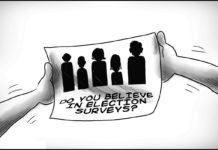BY SAMMY JULIAN
THE 2014 Post-Haiyan Tacloban Declaration, the outcome of the three-day Asia-Europe Meeting (ASEM) Manila Conference held from June 4 to 6, is another concrete step towards mainstreaming disaster resilience and building back stronger efforts.
The Declaration magnifies the importance of convergence among national and local governments, international and regional organizations, non-government organizations, private sector, civil society and media to heighten disaster risk reduction and management (DRRM) efforts as they take into account the massive devastation brought by super typhoon “Yolanda” (international name: “Haiyan”) in Philippine communities.
With great hope, we welcome the Post-Haiyan Tacloban Declaration that we all have learned our lessons from the disasters of the past and that this will lead to better disaster resilience efforts.
The document highlights the need to mainstream DRRM in development planning as well as the importance of building back better and stronger communities that have been affected by disasters.
It also calls on DRRM stakeholders to ensure the protection, empowerment and resilience building of vulnerable groups — women, children, the elderly, differently-abled people and indigenous communities.
The Post-Haiyan Tacloban Declaration will help us in our aim to increase the understanding of disaster and climate science, impacts and policy responses, encourage disaster and climate-proofing of development plans, and learn from successful experiences of communities and other countries.
It is evident that reducing disaster risks and adapting to climate change have become the greatest humanitarian and development challenges of our time. With the concern and involvement of all nations, we will be able to rise as one human community towards safer, resilient societies.
Future cities are not built after our time. We start building them today. Communities, 50 years from now, will look different and people will live differently. Their realities will not be defined in their time but in the lifetime of generations before them.
We all should realize the need to reassess the way science and policy should work together, emphasizing the importance of translating knowledge into practice to effectively manage disasters and reduce risks.
Likewise, we all should see the importance of utilizing past experiences, scientific research and reliable data to effectively institute policies, prepare plans, and implement responses that would reduce the risks of natural disasters.
It is not enough that climate scientists know the risks. Governments, local leaders and the people on the ground should understand the vulnerability of their communities and be equipped with options, resources and the tools to become drivers of action in their respective communities.
There are at least four lessons from the Philippine experience following the devastation of “Yolanda”.
First, there must be focus on managing the risks rather than managing disasters. This would involve the understanding and support of the people and the leadership of local government units through effective governance and implementation of laws.
Second, science must work for communities, for example, science must aid in strengthening building codes, drawing appropriate land use plans, creating geo-hazard maps, and others.
Third, all members of the community must be “disaster-literate,” that is, they must be aware of policies, plans and actions that must be done during times of disasters.
Lastly, the environment must be protected and green urban development must be pursued.
Building on good risk reduction practices means going back to the very basics.
We must protect our environment which supports human life and provides the basic materials for our economy, including food, fuel and clean water.
Let us to use our past experience not just to gain knowledge from one another, but also to transform that knowledge into concrete actions.
We are builders not just of communities of today, but communities of the future. Let us not rebuild the risks. We must rebuild stronger and wiser./PN



